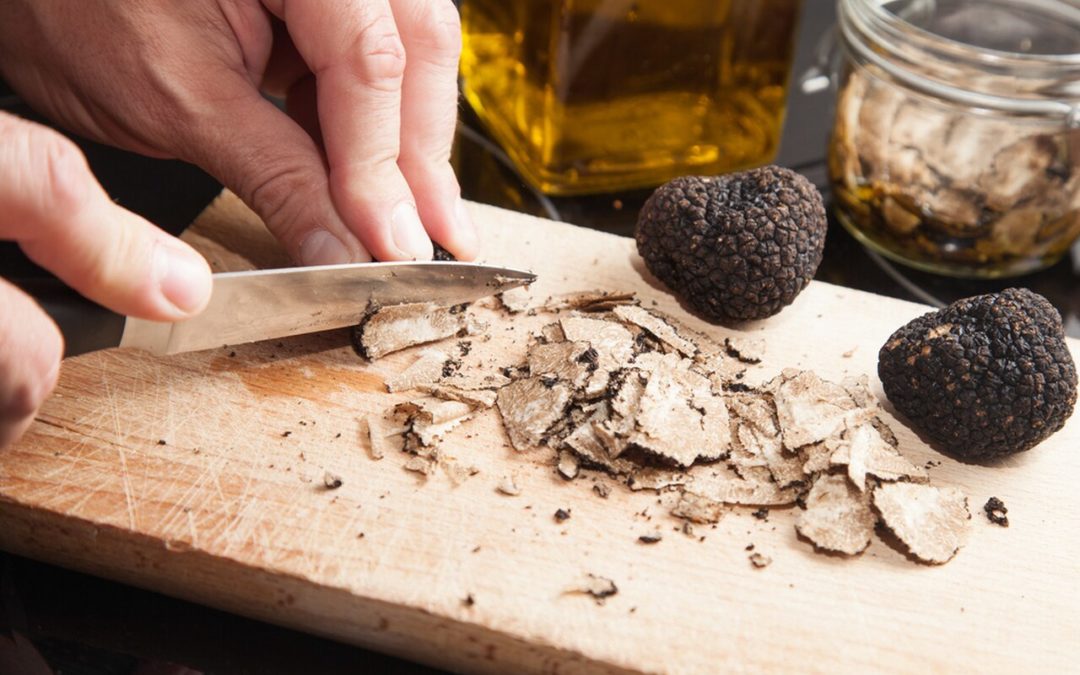
Cooking with Truffles
Whether you recognize it as “the” diamond of the kitchen or an overrated mushroom, truffles are a highly sought after delicacy. These flavorful tubers that grow beneath the soil develop a symbiotic relationship with the root system of specific types of trees. However, constant demand among avid epicureans and diminishing supply has carved out an extravagant price point especially for the Black Périgord and White Alba truffles. Even so, many sophisticated chefs have made cooking with truffles somewhat of an art form that has become a popular staple on their menu.
When it comes to cooking with truffles, it goes without saying that a modicum of thought and care should accompany the preparation of this luxury food. Whether you are cooking with fresh or preserved truffles or making recipes with truffle sauce or truffle juice, understanding the subtle nuances of the type of product you are using can greatly enhance your culinary experience. This is key whether you are making truffle the star ingredient or incorporating it into an entrée.
Things to remember when cooking with truffles include:
- The exquisite flavor of truffles can be easily overpowered when combined with foods that have their own distinct odors and flavors. Truffle works best with less aggressive ingredients such as pasta and potatoes that allow the essence of this noble fare to shine.
- The more enduring flavor and aromatic profile of Winter Black Truffles gives them greater flexibility that stand up to cooking in dishes like soups and stews. They also assimilate well and add a decadent flavor to eggs whether scrambled or as an omelet.
- Truffles also pair admirably with foods with a high fat content such as foie gras, butter and cream. Keep in mind that fresh truffles should be used as soon as possible to enjoy the essence of this delicacy at its peak.
- Ramp up the flavor when using preserved truffles. In recipes such as Roast chicken with Truffle Sauce, foie gras and truffle oil are star ingredients. Truffle oil has been infused with the same molecules that gives the fresh black or white truffles their delectable aroma.
- Although preserved truffles have a long shelf life, consumption should occur within a week after opening.
- Slice truffles into thin slivers or use a truffle shaver to make sure everyone at the table is able to fully appreciate and savor this luxury food.
- Toss Black Winter Truffle Peelings into soups or an otherwise bland sauce to heighten the overall savory essence of the dish.
- Avoid cooking White Winter truffles. The potency of this type of Truffle tend to dwindle at a faster pace. As such, it is best used sliced, slivered or grated over pasta or as a contrast to a creamy vegetable with a fresh, clean taste such as cauliflower.
- Highly acidic ingredients will stifle or diminish the true essence of truffles.
Overall, truffles used at the end of the cooking process typically fare better than in a lengthy preparation method. If you are new to this cuisine, consider trying out different recipes with the Summer Black truffles that allow for greater flexibility in cost and preparation. Recipes with truffle butter are also great for those new to this flavor.
Learn more about the many ways to prepare, cook and enjoy truffles by following House of Caviar and Fine food online or on Facebook. Since all our truffles and caviar products meet the strictest importation and quality standards, you can feel secure that you are getting the freshest and highest quality gourmet products when you visit our online store.
